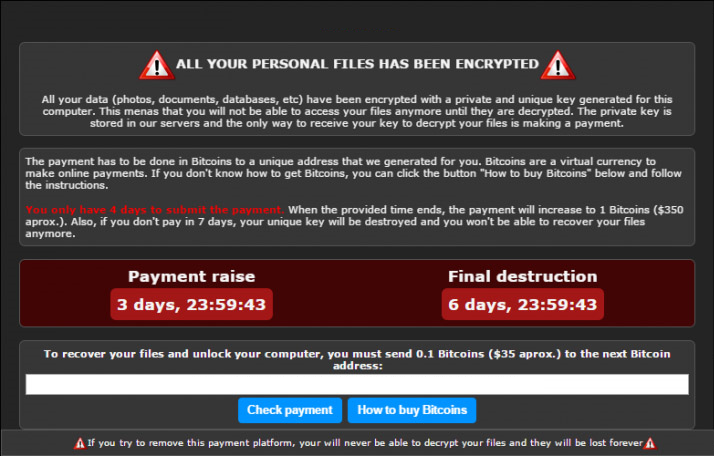
The scourge of ransomware shows no signs of slowing down. A single careless click on a link in an email is all that’s necessary for one of the many varieties of ransomware to install itself and quietly start encrypting data files on your computer, and on any others it can reach. Warning screens like the one above announce the dreadful news: your files are now effectively garbage. Pay the ransom or you’ll never see those files (intact) again.
Reports of ransomware hitting schools and hospitals are depressingly common. There’s evidence that attacks on sensitive targets like hospitals are intentional. Ransomware is now being installed by trojan malware that previously only stole your banking information. Newer televisions and other ‘smart’ devices that are connected to the Internet are being hit with ransomware that limits their functionality. Phony ICANN blacklist removal email is being used to trick people into installing ransomware.
If you’re wondering just how deep this ugliness goes, consider this: at least one strain of ransomware offers to decrypt your files for free if you pass the malware along to at least two other computers.
Assuming you’ve managed to avoid this nightmare, you’re either using strong anti-malware software, or you’ve trained yourself not to indiscriminately click links on the web and in email (hopefully both). Otherwise, you’re probably just lucky. So far, my only encounter with ransomware was a partial infestation of a client PC; the malware was prevented from doing any real damage by antivirus software (Trend Micro’s Worry-Free Business Security for anyone wondering).
Okay, so what’s the good news? Companies like No More Ransom offer services that can (sometimes) reverse the damage caused by ransomware. Of course, the success of this kind of service depends on the type of ransomware; some strains are easier to work around than others. But at least there’s hope for those ransomed files.
 boot13
boot13